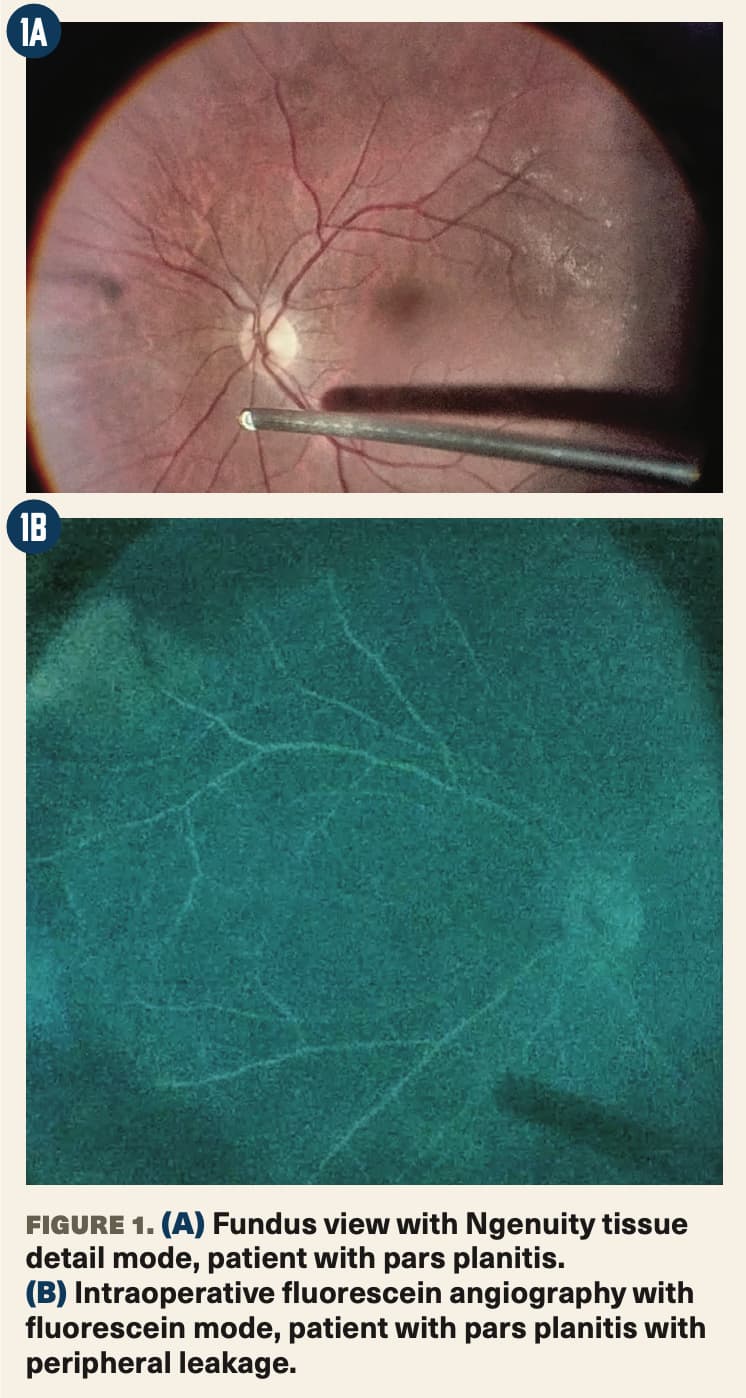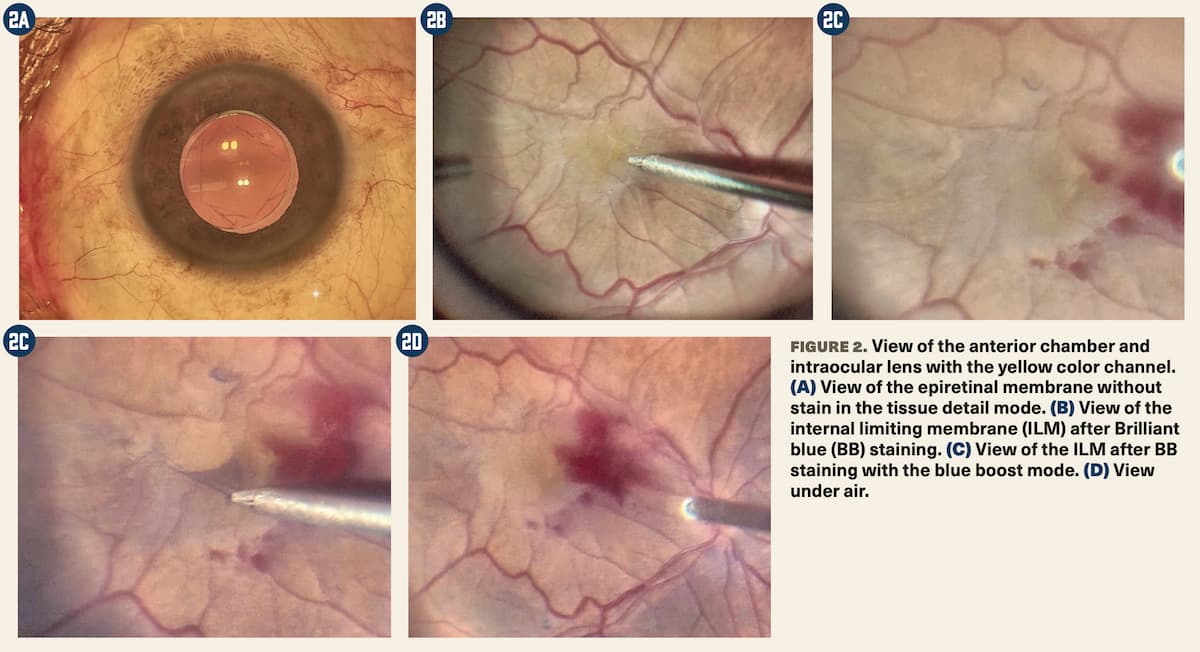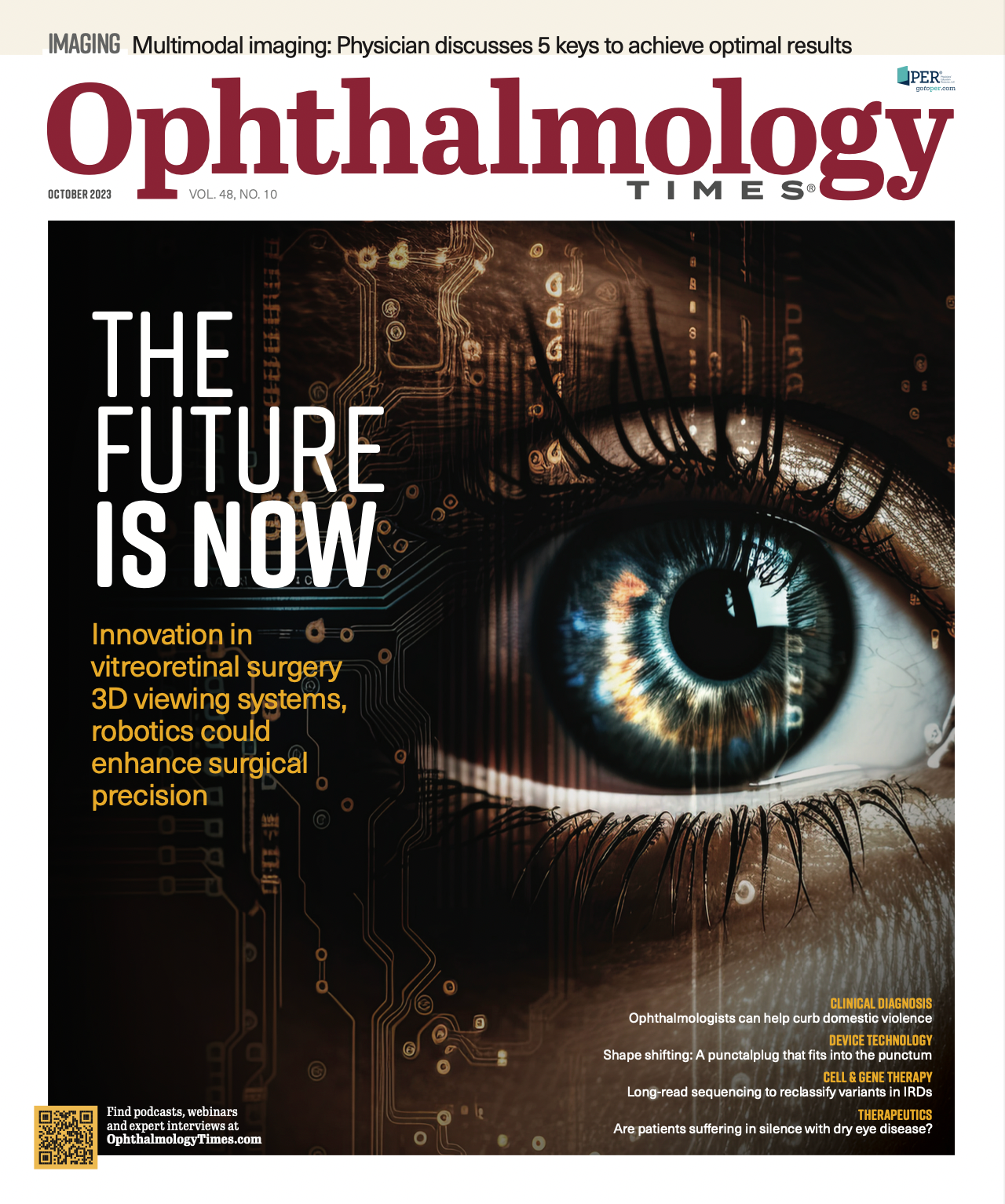- COVID-19
- Biosimilars
- Cataract Therapeutics
- DME
- Gene Therapy
- Workplace
- Ptosis
- Optic Relief
- Imaging
- Geographic Atrophy
- AMD
- Presbyopia
- Ocular Surface Disease
- Practice Management
- Pediatrics
- Surgery
- Therapeutics
- Optometry
- Retina
- Cataract
- Pharmacy
- IOL
- Dry Eye
- Understanding Antibiotic Resistance
- Refractive
- Cornea
- Glaucoma
- OCT
- Ocular Allergy
- Clinical Diagnosis
- Technology
The future is now: Innovations in vitreoretinal surgery 3D viewing systems, robotics
Developing technology may offer marked improvements in surgical precision
(Image Credit: AdobeStock/irissca)

Reviewed by Maria H. Berrocal, MD
Surgeons are becoming increasingly aware of the advantages of advanced technologies, such as digital microscopes and 3D visualization systems, that are making their way into operating rooms.
“These have entered the surgical suites and are here to stay,” said Maria H. Berrocal, MD, who described the technology’s pros and cons and the effect on retinal practice.
Berrocal, who is in private practice in San Juan, Puerto Rico, described the available and forthcoming technologies during a recent presentation at the 2023 Women in Ophthalmology Summer Symposium in Marco Island, Florida.
According to Berrocal, the 3D viewing systems and digital microscopes offer numerous advantages that include expanded field of view, expanded depth of field and resolution, increased magnification, the ability to manipulate digital images to enhance structures, integration of data into images, ergonomic benefits, and teaching capabilities.
The plusses associated with 3D viewing, Berrocal pointed out, are the simultaneous magnified viewing capabilities, in that the posterior pole and retinal periphery are in focus. In addition to the expanded field of view, 3D technology offers increased depth of field by 2.7 times, modes to enhance different structures, and a clear view under air.
Looking up
The heads-up systems that are commercially available include Alcon’s Ngenuity. It is an open platform that can be used with any microscope, has a 55-in viewing LED screen with 4 colors per pixel; provides customized image, hues, color, and resolution; provides data fusion to integrate systems; and is continuously upgraded. The disadvantage of this platform is that surgeons cannot view the monitor straight on.
The Zeiss Artevo 800 microscopeoptical coherence tomography (OCT)-integrated system, which has hybrid capability in that the surgeon can use oculars and the view is seen in the screen. It also includes an intraoperative OCT instrument from Lumera 700. The disadvantages are that it is a closed platform with no image enhancement capabilities.

Digital systems
The BVI Beyeonics One helmet-based exoscope, with headset viewing and controls, provides head movement control functions and the ability of the camera to tilt. The drawbacks, Berrocal said, are the weight of the headset, the small viewing screen, and the closed platform.
The Bausch + Lomb SeeLuma digital microscope includes fully digital binoculars and an unobstructed view of the monitor, a 55-in stand-alone and 31-in stand mounted monitors, and it is an interactive platform. The disadvantage is that it is a closed platform, Berrocal noted.
The Leica Proveo 8-2025 features Enfocus, high-definition OCT and en face imaging, it can be used heads-up or with oculars, and it has increased magnification and quick focus. The drawbacks are the 27-in screen, lack of image enhancement, and it is a closed platform that is not yet available in the US.
The Ocutrx Vision Technologies OR-Bot-2024 with a holographic headset has a 12K optical head, digital binoculars in the robotic arm and voice activation, and an 8K glasses-free 32-in monitor. The disadvantages are that it is still being developed and the platform is closed.
Robotics for vitreoretinal surgery
Berrocal noted that most of these technologies are still being developed, and the goal is to create “smart surgery” with artificial intelligence (AI), which includes data analytics of the instruments in the eye, zation, and the ability to perform very precise maneuvers such as subretinal injections and vessel canalization.
The Zeiss Preceyes Surgical System is the only robotic system that is commercially available. It is currently available only in the European Union, not in the US. It is a robotic assistant that can use all instruments; with its use, eye movements are minimized, hand tremors are filtered, and precision of movements exceeds 20 µm.
The robotics technologies that are still being developed, according to Berrocal, include the following.
The Steady-Hand Eye Robot from Johns Hopkins University is a cooperatively controlled robot, is surgeon controlled, eliminates tremors, and is used in vein cannulations and membrane peeling procedures.
The prototype intraoperative robotic intervention and surgical system, Raven II, from the University of California, Los Angeles, offers cockpit-augmented reality visualization, a robot that manipulates 2 surgical instruments, and it can be used during 3D and teleoperate procedures.
The Mynutia robotic system, which does not use a joystick, provides hand, eye, and instrument stability. The system increases the surgical precision by 10 times, and can be used for vessel canalization.
ForSight Robotics’ ORYOM Robotic Hand is a miniature robot that features data analytics with AI-based learning algorithms, stereoscopic imaging, and improved surgical performance. The goal is to make surgeons better and faster. The hybrid kinematic structure allows surgeons to reach any point within the human eye.
The SMARTsurg Project is a wearable surgical system that has anthropomorphic multifingered surgical instruments and a 3D viewing headset.
The Micron from the Robotics Institute at Carnegie Mellon University offers an intelligent hand-held instrument that has 6 sensors and 3 actuators, reduces tremors and oscillations by 50%, and has machine learning.
Horizon Surgical Systems is involved in revolutionizing microsurgery through advancements in robotics, medical imaging, and artificial intelligence. The goal is to enable surgeons to extend beyond the limits of human precision.

In the surgical suite
During her presentation, Berrocal also described the case of a 68-year-old woman with a history of progressively decreasing vision from 20/20 to 20/60 and increasing metamorphopsia over a 1-year period. The patient underwent vitrectomy and membrane and internal limiting membrane (ILM) peeling with the Ngenuity 3D visualization system and Oculus Optos HD lens.
Brilliant blue stain was used to visualize the ILM with the blue boost mode in the Ngenuity. The figures show views as seen with the different color channel modes in the system.
“Digital microscopes and 3D visualization systems are the present and the future,” Berrocal said. “The technologies are very advanced and the iterations are improving continuously. Robotics for use in vitreoretinal surgery are still being developed; they are promising for high-precision maneuvers, like vessel cannulation and subretinal injections.”
Maria H. Berrocal, MD
E: mhberr78@gmail.com
Berrocal is in private practice in Drs. Berrocal & Associates in San Juan, Puerto Rico, and an associate professor at the University of Puerto Rico. Berrocal is a speaker for and consultant to Alcon.

